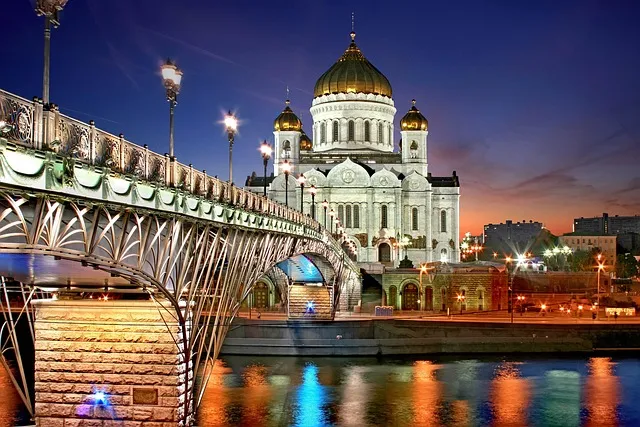Russia & Moscow-Understanding
Russia is a conglomeration of many states with Moscow its capital. My curiosity to visit this land, was huge, as it encompasses more than 1/8th of the earth’s landmass and is the largest political and geographical country in the world. Its population makes it the ninth most populous country. Once, nomadic tribes from Europe and Asia wandered across the vast lands and stamped their authority, seeded their culture, preached their religion and shed blood defending their beliefs. Each region portrays a multicoloured culture-making Russia is a mosaic, painted by a turbulent history, making this Eurasian country most interesting. Moscow was first a settlement of Slavs who built wooden houses, inside a wood fortress, perched on high ground above the marshy banks of the Moskva River. Ravished by the Mongol hoards of Ivan the Terrible they began to prosper and grew in size and power, and gained independence defeating the Mongols in battle. The fall of the Roman Constantinople, set the tone for the Russian Orthodox Church to play a major role in its religious beliefs as well as architecture by Italian architects and Russian painters, moulding a fusion of Asian Muslim, Christian and European craftsmanship. A Eurasian culture was established. Moscow soon became envied and was forced to repel Polish invasions. It began to compete with the northern European countries in trade and politics.
Under the reign of Peter the Great it became a naval power and Moscow not proximate to the sea became the second capital. Though far away from the capital, the reign of Empress Elizabeth transformed Russian men and women by founding the first University in Moscow. Russia, particularly Moscow under Queen Catherine the Great, underwent a transformation period of innovation, expansion and modernization. It was on par with the Renaissance’s sweeping change in Europe.
Moscow suffered the bubonic plague which killed 50,000 people leading to a period of unrest and resettlement. Then the Napoleonic wars, demolished the town and threatened to breach, the very gates of the fortress of Moscow. The aftermath of the war and the people’s revolution emancipated the serfs from around Moscow to move into the capital city. The growing trade and industrialization of Moscow, lead to a huge rural migration and Moscow grew into a rich industrial city.
The First world war inflicted a devastating blow to Russian pride and the Russian Revolution brought the end to the reign of kings and the birth of a Parliament.
Lenin with his communism changed the life of the Russians and Moscow became the capital again. Muscovites were taught to believe in themselves and politics broke its shackles from the religious bearings. The era of Joseph Stalin saw Moscow step into the modernization of its industry, agriculture and metropolis. It soon lost many lives to famine but regrouped to build underground tunnels to serve the purpose of a metro railway system for serving its defence forces and for public convenience. It also was to serve as a bomb shelter protecting the Germans during the Second World War. After Hitler, Russians and particularly the Muscovites began believing in their determination to ward away any calamity.
The later era of Communism under its Presidents saw Russia grow into a superpower and it vied with the USA as well as the powers, that controlled the world. Russia stood firm belief in communism and advanced in all walks of life. Space and arms race challenged the supremacy of the USA and its allies. However, a military coup in the eighties of the previous century saw Russia fragmented and world trade as well as the belief in self possessions brought in private enterprise.
Russia is endowed with vast natural resources and it is today the power and energy source and supplier to most of the countries on the Globe. Moscow is today a land of skyscrapers, renovated huge buildings, excellent roads, waterways and railways. Having opened itself to the reality of the world surrounding it and shaking away its laborious bonds with communist theology, the Muscovites are now returning to religion.
Many beautiful churches used by the communist administration have now been handed back to the Russian Orthodox Church. These churches along with the Imperial residences of the Tsars, play a major role in Russian tourism, particularly in Moscow. Pubs, hypermarkets and the 24-hour lifestyle of the modern world have caught up with it. Moscow is today a 24/7 metropolis.
Moscow is a well-planned metropolis and has many parks, squares, green spaces, avenues and boulevards harmoniously blending itself with modern and ancient structures. Moscow once portrayed to the world as a poor, rustic, dangerous metro capital ruled by a hardcore tyrannical political power set among an iron curtain and spoken of as a threat to democracy is not what it was said to be. Whatever it may have been its Socialist politics is still its heartbeat. The determination of its people is a classy example of a simple people using modern inventions and yet not losing their culture to the luxurious way of life.
The Russians are famous for their circus which possesses the best Trapeze artists and certainly, their way of life as found in their history, as understood by me as of now, has been acrobatic, adventurous, brave and not to mention surprisingly interesting.
I am yet to put in a few more words on Moscow and the Russian way of life but rest a while. For me to rush my thoughts, I would certainly not be doing justice to a great nation and a hard-working community that had been scathed by negative propaganda which had kept its development under wraps for a considerable period of time. Russia and Moscow deserve more than applause or just a few words of commendation.








